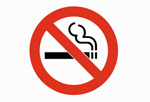 Back in 2006, a U.S. state (Massachusetts, to be exact) started paying for stop-smoking treatments. Researchers who have just completed a study on the success of the program say that, not only did people kick the habit, but they also had fewer heart attacks.
Back in 2006, a U.S. state (Massachusetts, to be exact) started paying for stop-smoking treatments. Researchers who have just completed a study on the success of the program say that, not only did people kick the habit, but they also had fewer heart attacks.
Smoking dropped among clients of Medicaid, the state health insurance plan for the poor, and nearly 40% of Medicaid patients who smoked used benefits to get nicotine patches or drugs to help them quit, the researchers said.
After reviewing data from the state-funded program, the research team found that smoking among Medicaid clients fell an estimated 10%. At the outset of the program, smoking rates hovered around 38%, before slowly but steadily dropping to 29%.
The research team also found 46% fewer Medicaid clients were treated in hospitals for heart attacks and 49% fewer for acute coronary heart disease (a condition usually caused by clogged arteries). The study results definitely suggest that governments can save money by investing in efforts to cut smoking. The dramatic decline in heart attack hospitalizations for smokers who used the Medicaid program is quite astonishing. It demonstrates the effectiveness of tobacco addiction treatment covered by a funded program. This treatment includes access to behavioral counseling and medicines approved by the Food and Drug Administration.
Most states do not pay for stop-smoking treatments in their insurance plans for the financially disadvantaged. About 45% have partial coverage, but only 12% offer comprehensive coverage. Without evidence of health improvements or costs saved in treating diseases further down the line that are linked to smoking, it is difficult for policy makers to put programs into action. One of the biggest stumbling blocks for something like the Medicaid smoking-cessation program is that there is an initial cost involved. It can be difficult to convince others of the health benefits of a funded program when the program comes with significant expenses.
State and federal health officials have been looking for ways to cut healthcare costs. People pay more per capita for healthcare in the U.S. than in any other similar developed country. Perhaps studies like this, which show a clear and significant health benefit combined with fewer dollars spent on hospital care, will make the decision to fund treatment programs easier.
Many states have already looked at the issue of smoking and health, and passed laws aimed at reducing exposure to secondhand smoke. Clinical trials conducted to determine the success of these laws will no doubt show fewer incidences of smoke-related diseases like cancer and respiratory infections.
